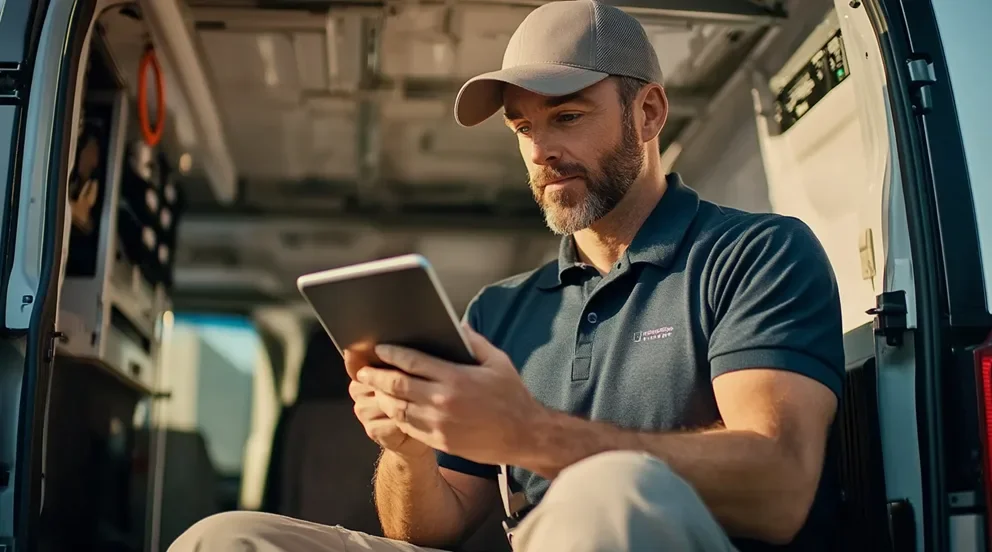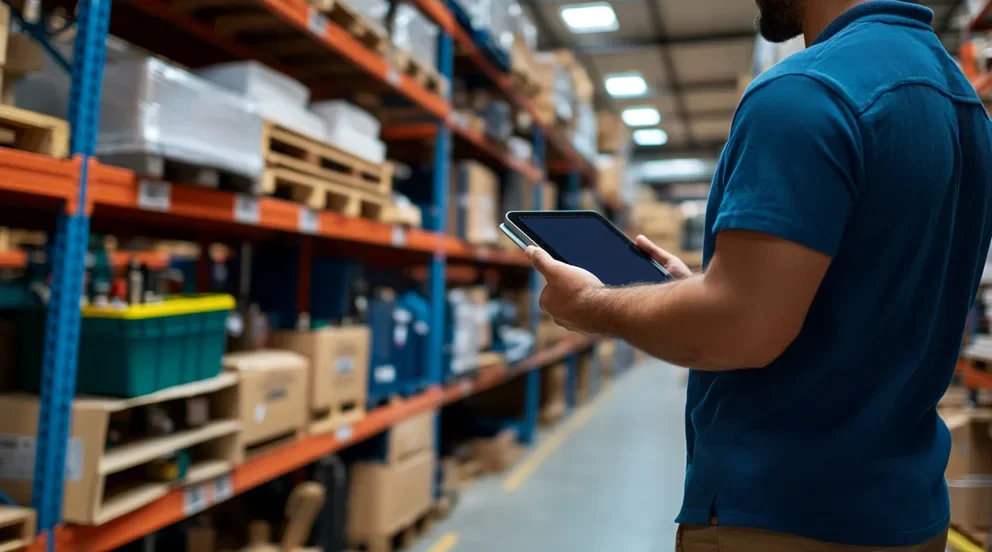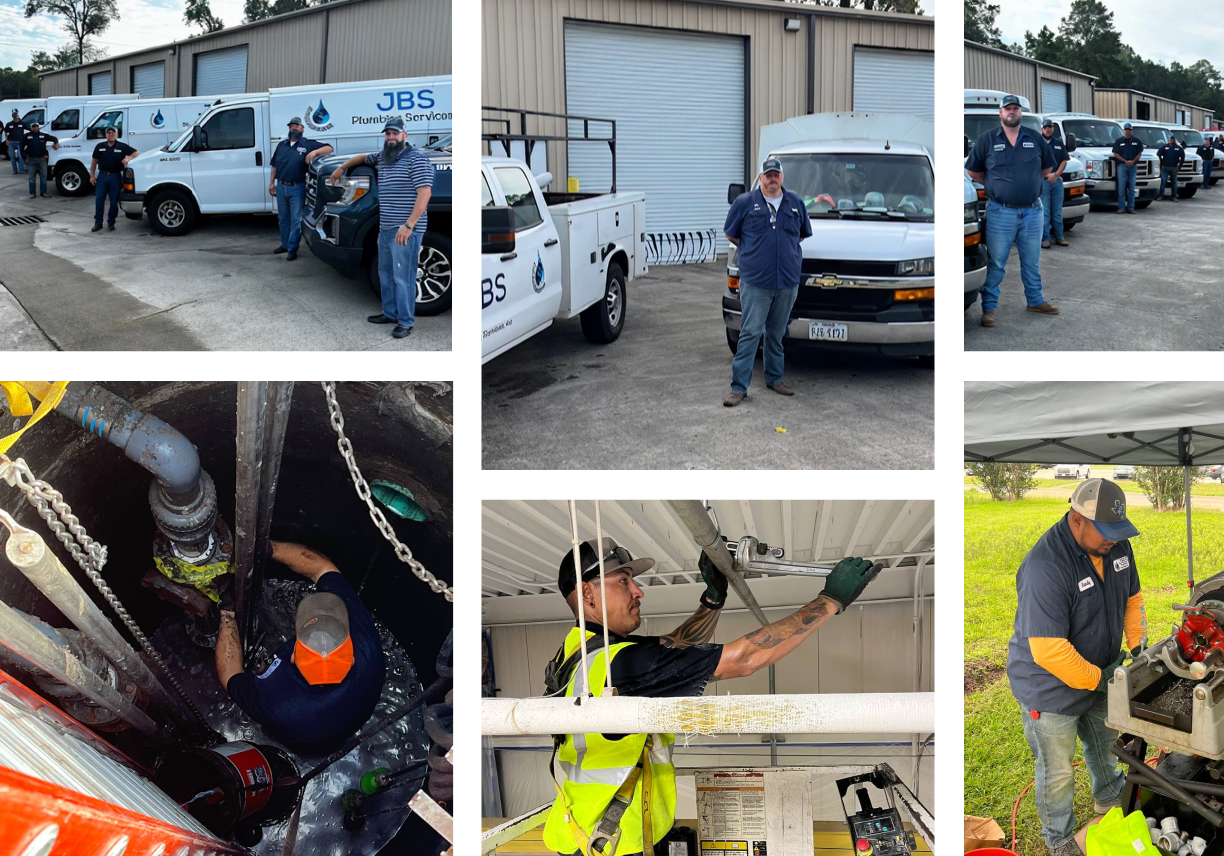Organizing tools, parts, and materials can mean the difference between a profitable day and one full of costly setbacks. Plumbing companies juggling repairs, new installs, and emergency service calls know that wasted time hunting for parts adds up fast. That’s why a plumbing inventory app isn’t just helpful — it’s critical for crews out on jobsites or constantly on the move.
This guide breaks down everything you need to know about choosing, using, and benefiting from a plumbing inventory app. Whether you’re managing a few service vans or an entire warehouse of stock, the right app keeps you organized, cuts costs, and helps you get jobs done faster.
Here’s what we’ll cover:
- Choosing the right plumbing inventory app for your needs
- 5 key features to look for in a plumbing inventory management app
- 6 types of plumbing inventory apps contractors use
- 7 best plumbing inventory management apps to enhance your operations
- 5 benefits of using a plumbing inventory app
- 4 important plumbing inventory management app FAQs answered
Some apps are packed with features you might never use. Others look sleek but fall short when you’re dealing with real jobsite conditions. So how do you cut through the noise and find something that actually works for your team, your trucks, and your bottom line? Let’s break it down.
Choosing the right plumbing inventory app for your needs
When you’re juggling emergency calls, scheduled installs, and warehouse restocks, the last thing you need is an inventory system that slows you down. A plumbing inventory app should make it easier to know what’s in stock, what’s on the truck, and what needs to be ordered—without anyone having to call the office. But not all apps are cut out for field conditions or the way plumbers work. Start by asking the right questions to match the tool to your team’s day-to-day reality.
- Jobsite needs – Can your team check inventory levels from the field without needing to drive back to the warehouse? Is the app reliable in areas with poor cell service? Can plumbers log usage while they’re on the job, not hours later?
- Team size and structure – Does the app let you manage inventory for just a couple trucks—or scale up as you grow? Can you assign different access levels for techs, warehouse leads, and office staff? Will multiple users run into sync issues when they update items at the same time?
- Material turnover and stock types – Can the app track small, fast-moving parts like washers and elbows as easily as large items like water heaters? Does it support barcode or QR scanning to speed up logging? Can it flag high-usage items before you run out?
- Office and warehouse syncing – Does the system keep your field and warehouse inventory aligned in real time? Can your warehouse staff prep restocks based on what was actually used that day? Does it prevent duplicate orders or missing materials?
- Features – Can the app send alerts when inventory gets low? Does it connect with your work order or dispatching system? Can it give you reporting on trends—like which parts are constantly running out or which ones barely move?
Now that you've got a grip on what to ask before choosing a plumbing inventory app, it’s time to dig deeper. Let’s look at the core features that set a plumbing inventory management app apart—especially for field crews and fast-paced service teams.
5 key features to look for in a plumbing inventory management app
When tools and parts are scattered across trucks, jobs get delayed. When you’re not sure what’s in stock, your crew either over-orders or shows up to a job half-prepared. For plumbing contractors who live in the chaos of field service, a plumbing inventory management app has to do more than track gear—it needs to connect to the real work: service calls, scheduling, billing, and keeping your techs in sync. Here are five features that make that possible:
1. Invoicing that tracks usage instantly
With invoicing software, you can link parts used in the field directly to a bill, so nothing gets lost or delayed. This is key for staying accurate with customers and internal tracking. Let’s say your tech replaces a faulty valve on a call and pulls from truck stock. Instead of scribbling a note or calling it in later, the app auto-populates the invoice with that valve the second it’s marked as “used.” That means fewer missed charges and faster billing—no guesswork back at the office.
2. Dispatch visibility tied to stock
A plumbing inventory management app that connects to your dispatch software keeps your back office and trucks in sync. Dispatchers can see what’s actually available on each vehicle before assigning a job. For example, your team gets an urgent call about a burst pipe. The dispatcher sees Tech #3 has the right fittings and a sump pump already onboard—so they send them straight over. No warehouse stop, no part delays. Just fast, informed dispatching that keeps your day moving.
3. Smarter scheduling linked to inventory
Scheduling tools that integrate with your inventory app let you plan work based on actual stock—not just calendar availability. Let’s say your scheduler is lining up a string of tankless installs next week. Instead of guessing or checking a spreadsheet, they confirm the number of units in stock directly through the app before locking in appointments. That way, your crew isn’t stuck on-site waiting for deliveries or chasing down parts.
4. Service agreements with auto-replenishment
Tying your plumbing inventory system into your service agreement software helps automate the repeat work that keeps your pipeline full. Say you’ve got a preventative maintenance contract with a property manager who owns a dozen buildings. Each visit includes standard replacements—filters, washers, trap seals. The app triggers a restock list after every service and even logs what was used at each location. No more running low mid-route or scrambling before a visit.
5. Mobile app access for techs in the field
A dedicated technician mobile app is what makes inventory tracking actually usable in the field. Without it, even the best system falls apart under jobsite pressure. Picture this: your tech is knee-deep in a slab leak repair. He grabs the last roll of PEX tubing and updates it in the app from the jobsite. That single tap syncs with your main inventory, flags a reorder, and gives the warehouse a heads-up. It’s fast, it’s accurate, and it keeps your system running without slowing your crew down.
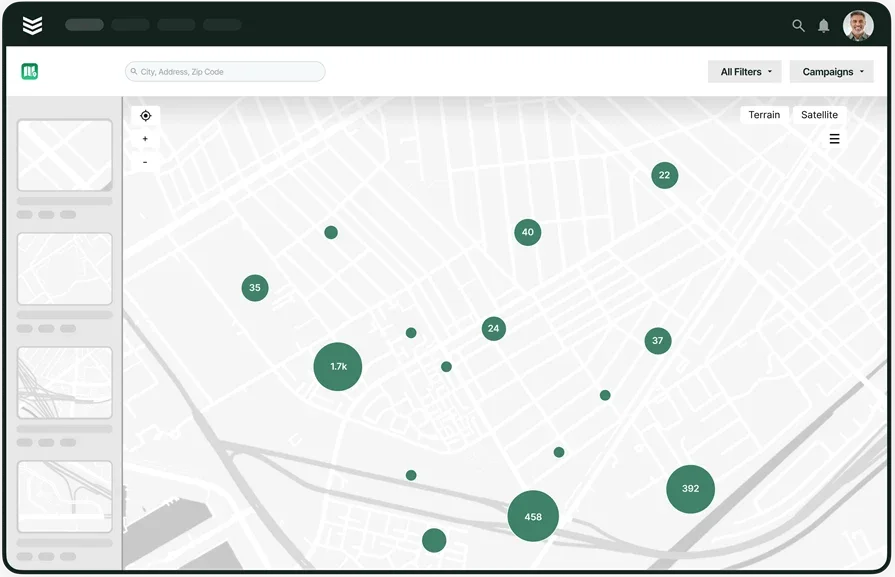
Explore our CRM product
Win more bids, track projects, and keep inventory stocked—from one system.
Now that you know what features make a plumbing inventory app actually work in the real world, let’s break down the types of apps you’ll come across—and which ones are built to handle the way plumbers really operate.
6 types of plumbing inventory apps contractors use
Plumbing teams work differently depending on the jobs they take and the size of their crew. That’s why there isn’t one universal inventory setup. These six types of plumbing inventory apps cover the main ways contractors manage parts—on the truck, in the warehouse, or across jobsites.
- Inventory management integrated with FSM – Combines inventory tracking with field service tools like scheduling, quoting, and dispatching. Great for contractors who want everything—from part usage to job updates—in one platform. Instead of bouncing between five apps, your techs, dispatchers, and warehouse crew are always in sync. It’s especially useful when you’re managing work orders and inventory across multiple job sites in a single day.
- Barcode tracking – Lets techs scan barcodes to log inventory use fast. Ideal for plumbing teams dealing with lots of small parts and fittings every day. You can assign barcodes to individual items or grouped kits, reducing time spent typing or guessing part numbers. It also cuts down on human error, especially when the pressure's on during emergency jobs.
- Radio frequency identification (RFID) – Uses wireless tags to automatically track parts and tools. Works well for large shops needing hands-free tracking and security. With RFID, you can log movement without scanning—just walk past a reader and your tools are tracked. It’s a solid solution for plumbing companies with high-value gear that moves constantly between trucks, warehouses, and job sites.
- ABC analysis – Sorts parts into priority groups (A, B, C) based on usage and value. Helps focus stock management on what matters most for your crew. Your “A” items—those critical and high-usage parts—get monitored closely, while “C” items can be ordered less frequently. This system helps manage budgets and avoid tying up cash in parts that barely move.
- Perpetual inventory system – Updates inventory in real time. Every part used or added is tracked immediately—solid choice for busy service teams. This keeps your numbers current without the need for manual updates. It’s especially valuable when multiple techs are pulling from the same stock and you want live visibility into what’s actually available.
- Periodic inventory systems – Relies on manual counts done at set intervals. A fit for smaller shops just starting to get organized. You might do weekly truck checks or monthly warehouse audits to track what’s been used. While less advanced, it’s better than working from memory and gives teams a simple first step toward improving material control.
Now let’s look at specific plumbing inventory management apps that actually do the job—whether you’re focused on commercial, residential, or somewhere in between.
7 best plumbing inventory management apps to enhance your operations
Choosing a plumbing inventory management app isn’t just about checking a box—it’s about finding software that works the way your crew does. Whether you run a commercial outfit with multiple techs or a smaller residential service team, you need tools that sync with how you dispatch, stock, invoice, and scale. Below are seven of the top apps out there, each with their own strengths and potential tradeoffs.
1. Best for commercial: BuildOps
BuildOps was designed for commercial plumbing contractors who need more than just inventory tracking. It’s a full service management platform that brings together real-time inventory updates, work order tracking, quoting, invoicing, and technician scheduling—all in one system. It’s especially strong for teams with multiple technicians, complex workflows, and the need for visibility across departments.
App type: Cloud-based mobile app and desktop software
How pricing works: Custom pricing based on company size and needs; quote required after demo.
Features beyond inventory management: Includes advanced dispatch tools, real-time scheduling boards, time tracking, field quoting, and technician mobile access.
What sets it apart for commercial: Built specifically for commercial service contractors, it supports multi-property asset tracking, tiered service levels, and deep reporting without the bloat of generic platforms.
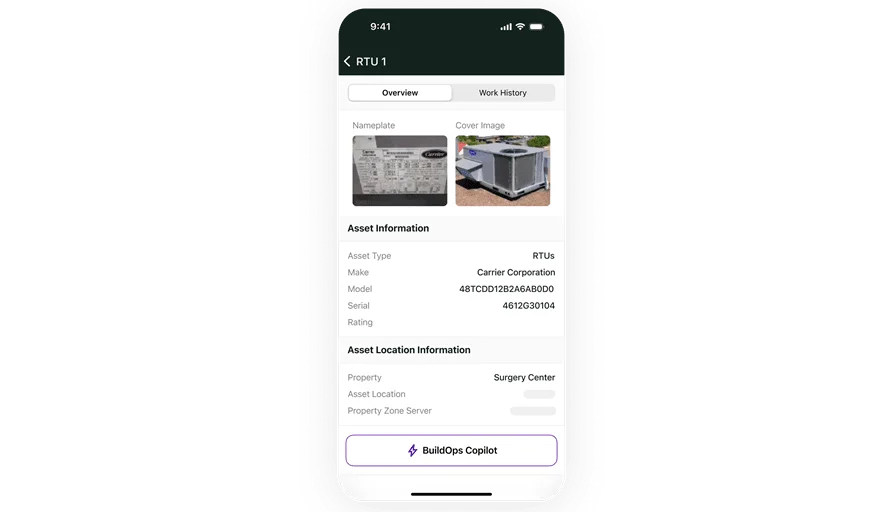
Check out our plumbing software
We connect inventory, job details, and field techs—all from one dashboard.
2. Best for residential: Housecall Pro
Image Source: Housecall Pro
Housecall Pro is a popular option for residential plumbing companies looking for something clean, easy to use, and fast to set up. It helps small teams schedule jobs, send invoices, collect payments, and keep tabs on inventory in the field. However, it’s lighter on backend reporting and may not scale well with larger commercial operations.
App type: Cloud-based / Web-based
How pricing works: Starts at around $59/month for the basic plan; higher tiers unlock more features.
Features beyond inventory management: Offers payment processing, marketing tools, and customer reminders.
What sets it apart for residential: Its simple interface and mobile-first design make it easy for solo plumbers and small teams to stay organized without a steep learning curve.
3. Best for general contractors: Zoho
Image Source: Zoho
Zoho Inventory brings a full suite of tools that work well for general contractors managing mixed teams or multiple service types. Its inventory tools include order management, stock tracking, and vendor coordination. However, it’s not tailored specifically for plumbing, which may lead to workarounds or unused features.
App type: Cloud-based / Web-based
How pricing works: Paid plans for up to two users start at $29/month for advanced capabilities.
Features beyond inventory management: Built-in CRM, purchase order automation, invoicing, and integrations with accounting software.
What sets it apart for general contractors: Flexible enough to support plumbing plus electrical, HVAC, or general building supply management all in one platform.
4. Best for independent contractors: Odoo
Image Source: Odoo
Odoo is an open-source ERP platform that includes a solid inventory management module. For solo plumbers or small contracting businesses looking for something flexible and customizable, it’s a strong option. You can build a tailored system with everything from quoting and stock control to CRM and project management. However, the learning curve is steep, and setting it up without developer help can be time-consuming.
App type: Cloud-based / Web-based
How pricing works: Starts free with limited apps; paid plans begin around $31/month per user, depending on selected modules.
Features beyond inventory management: Includes project tracking, customer databases, basic accounting, and HR tools.
What sets it apart for independent contractors: You can turn it into a lightweight plumbing business hub, piece by piece—without committing to a massive software suite upfront.
5. Best for small to mid-sized businesses: Xero
Image Source: Xero
Xero is a popular cloud accounting platform with built-in inventory features that work well for small to mid-sized plumbing shops. It’s designed with financials in mind, helping you manage both parts and profits from the same place. But its inventory tracking is basic, and may not meet the demands of growing service businesses with more complex job workflows.
App type: Cloud-based / Web-based
How pricing works: Plans start around $15/month; inventory tools included in the “Growing” plan and up.
Features beyond inventory management: Strong invoicing, payment tracking, payroll add-ons, and built-in financial reports.
What sets it apart for small to mid-sized businesses: Seamlessly combines parts tracking with real-time financial visibility, helping you monitor margins without extra software.
6. Best for simple inventory tracking: Sortly
Image Source: Sortly
Sortly offers a clean, intuitive interface for contractors who just need quick visibility into what’s in stock. It’s ideal for plumbing teams that want to get started without jumping into a complicated system. The visual organization tools and folder-style layout make it easy for techs to use in the field. However, it lacks deeper service integrations and advanced reporting features.
App type: Cloud-based / Web-based
How pricing works: Free for basic use; paid plans start at $29/month and scale based on users and features.
Features beyond inventory management: Offers image-based item tracking, low-stock alerts, and activity logs.
What sets it apart for simple inventory tracking: Super easy to roll out—even for teams that have never used digital tools to manage parts before.
7. Best for specialty contractors: Fishbowl Inventory
Image Source: Fishbowl
Fishbowl Inventory is a powerful option for specialty plumbing contractors who handle custom installs, complex materials, or large-scale projects. It syncs with QuickBooks, offers advanced part kits and assemblies, and can manage warehouse-level complexity. But it may be overkill for basic service teams or residential work.
App type: Cloud-based / Web-based
How pricing works: Custom pricing; typically starts around $4,395 for a one-time license or $195/month for cloud subscriptions.
Features beyond inventory management: Includes purchase order management, sales tracking, manufacturing workflows, and QuickBooks integration.
What sets it apart for specialty contractors: Perfect for plumbers handling specialty jobs—like hydronic heating, commercial boilers, or custom system builds—where managing assemblies and bulk materials is critical.
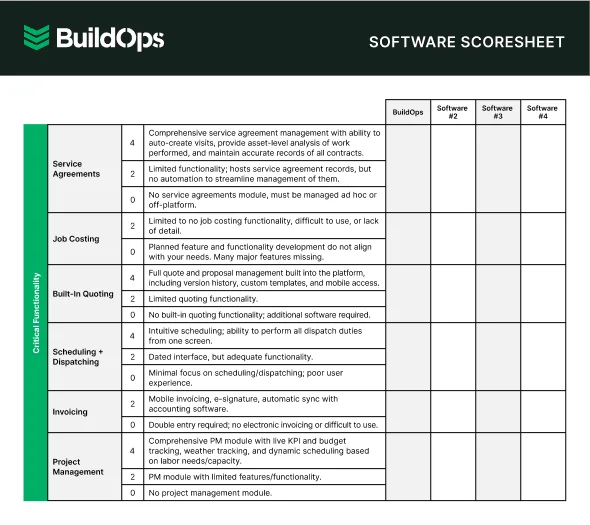
Choose the right tool for your team
Compare leading software tools with this easy-to-use scoresheet.
5 benefits of using a plumbing inventory app
Tracking parts is only the beginning. A plumbing inventory app gives contractors the tools to run leaner, faster, and smarter—whether you're managing a few vans or a full team across multiple sites. The real impact shows up in the day-to-day: tighter margins, fewer mistakes, and smoother jobs from start to finish.
1. Fewer missed charges and better billing accuracy
When parts are logged instantly and linked to jobs, there’s no more guesswork at invoicing time. Techs don’t have to remember what they used—and the office doesn’t have to chase down missing info. This benefit becomes even more obvious when paired with smart billing tools. If you’re looking for cleaner, faster ways to bill clients, this plumbing invoice template gives you a solid foundation to build from using your app’s part tracking data.
2. Stronger job profitability through tighter material control
Wasted fittings, double orders, and lost tools eat into profits fast. A plumbing inventory app helps reduce material shrinkage and alerts you before stock runs dry. With better oversight, you can avoid unnecessary last-minute purchases at premium prices. That’s one reason more contractors are turning to plumbing contractor software that connects field activity directly to office reporting and job costing. You’ll know where your dollars are going—part by part.
3. Improved customer service and trust
Running out of parts mid-job or showing up without what you need frustrates customers—and slows down your crew. An inventory app helps prevent these mishaps by giving real-time stock visibility, so techs arrive prepared. Plumbers using CRM systems tailored for the trade can go even further—tracking customer history, asset details, and past repairs all in one place alongside inventory usage. That combo helps you look more professional and deliver better service.
4. Easier forecasting and smarter planning
Inventory apps with reporting functions give insight into trends—what’s moving fast, what’s gathering dust, and where your budget is being spent. That data helps with planning seasonal work, stocking efficiently, and negotiating supplier deals. According to this deep dive on plumbing company growth data, businesses that track their metrics—from parts usage to job completion time—are seeing stronger margins and smarter expansion. Inventory is a big part of that.
5. Better field efficiency and less downtime
Plumbers shouldn’t have to call the office to ask if a part’s in stock or drive back to the shop mid-job. With a mobile-accessible app, your crew sees what’s available, where it is, and what’s already been used. That speeds up every job. Over time, that faster access cuts idle time between appointments and reduces callbacks due to missing parts. It’s one of the quiet wins that keeps your operation moving and your crew focused on the work—not the logistics.
4 important plumbing inventory management app FAQs answered
If you’re still on the fence about using a plumbing inventory management app, you’re not alone. Contractors often have the same questions—how it works, what it costs, and how to make it worth the investment. Here’s a breakdown of the most common concerns, answered simply and clearly.
1. What is a plumbing inventory app?
A plumbing inventory app is a digital tool that helps plumbers and service teams track, manage, and restock parts, tools, and materials across trucks, warehouses, and job sites—all in real time. The app is designed to keep your inventory easily synced with what’s actually happening in the field.
It keeps everyone aligned on what’s available, what’s been used, and what needs to be reordered—cutting out phone calls, whiteboards, and guesswork. The best ones integrate with your dispatching, quoting, and invoicing tools, so inventory becomes part of your larger workflow.
2. How do plumbing inventory management apps work?
Plumbing inventory management apps are designed to be simple in the field but powerful behind the scenes. Here’s how they typically function:
- Techs use a mobile app to log parts as they’re used
- Inventory counts update in real time across the system
- Low-stock alerts trigger when thresholds are hit
- Warehouse managers can prep restock orders or transfer stock between vehicles
- Office staff can see what each truck has on board
- Reports show usage trends over time
- Some apps integrate with dispatch, so jobs are assigned based on available parts
- Invoicing can pull directly from usage data—no more chasing part lists
The goal is to reduce manual entry, save time, and prevent costly job delays due to missing materials.
3. Is the cost of an inventory management app worth it for plumbers?
Yes—and especially for teams doing regular field work. The upfront cost of a plumbing inventory management app is usually far less than the ongoing cost of lost parts, double ordering, or showing up unprepared. You’ll also get more accurate billing and tighter job costing. Over time, the savings in labor, material waste, and admin overhead more than pay for the software.
4. What are some best practices to follow when implementing a plumbing inventory app?
Rolling out a plumbing inventory app doesn’t have to be a hassle if you set it up right from day one. Here are best practices to make the transition smoother:
- Start with a clean inventory count before launch
- Assign one person to lead the rollout and training
- Make sure every tech has mobile access and knows how to log usage
- Set low-stock thresholds and alerts to avoid last-minute restocks
- Build part lists based on common job types
- Use barcode or QR scanning to simplify logging
- Sync the app with dispatch and invoicing if possible
- Schedule regular audits to catch gaps or errors early
Following these steps keeps adoption high and ensures the tool actually helps—not adds another layer of work.
Plumbing inventory management is no longer something you can afford to handle with spreadsheets and guesswork. From real-time stock tracking to tech-friendly mobile tools, the benefits of using a plumbing inventory app stack up fast—especially when integrated with scheduling, quoting, and dispatching. But while many tools offer pieces of the puzzle, most fall short of delivering the full picture.
That’s where an all-in-one field service management platform built specifically for commercial contractors makes the difference. With connected systems and field-ready tools, you can stay ahead on every job—without patching together a dozen different apps.
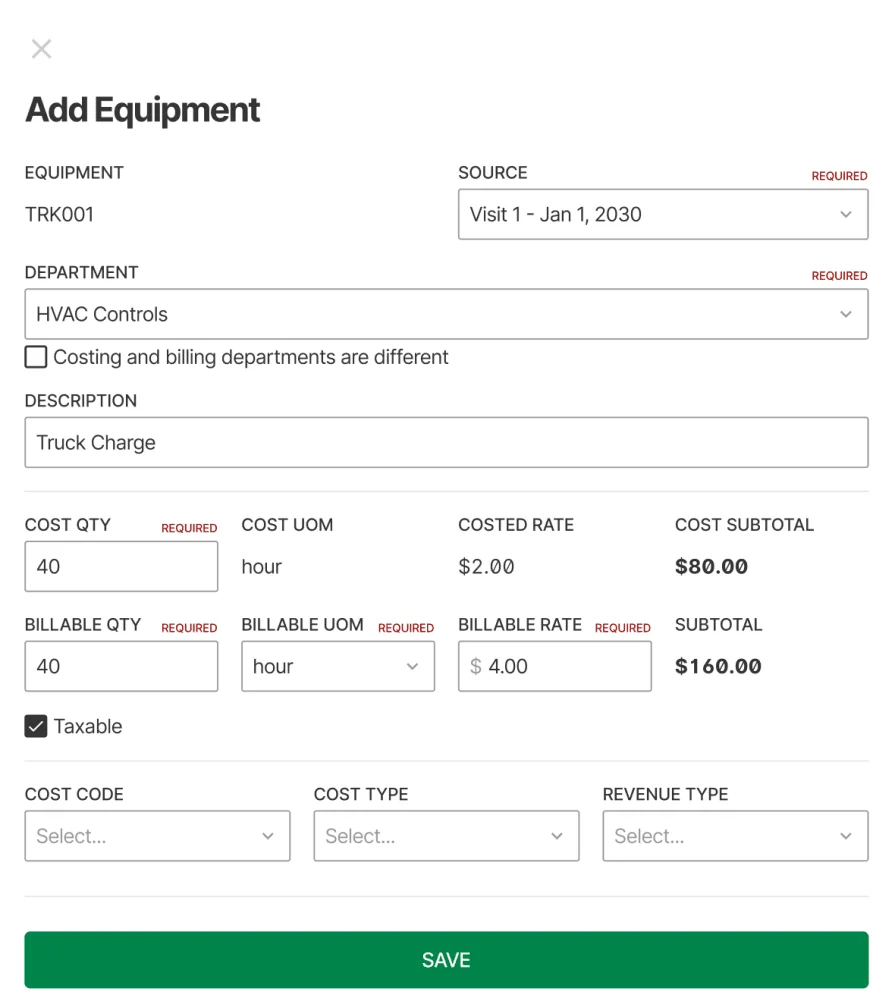
Explore our inventory product
We help plumbers stay organized, profitable, and ready for the next call.
